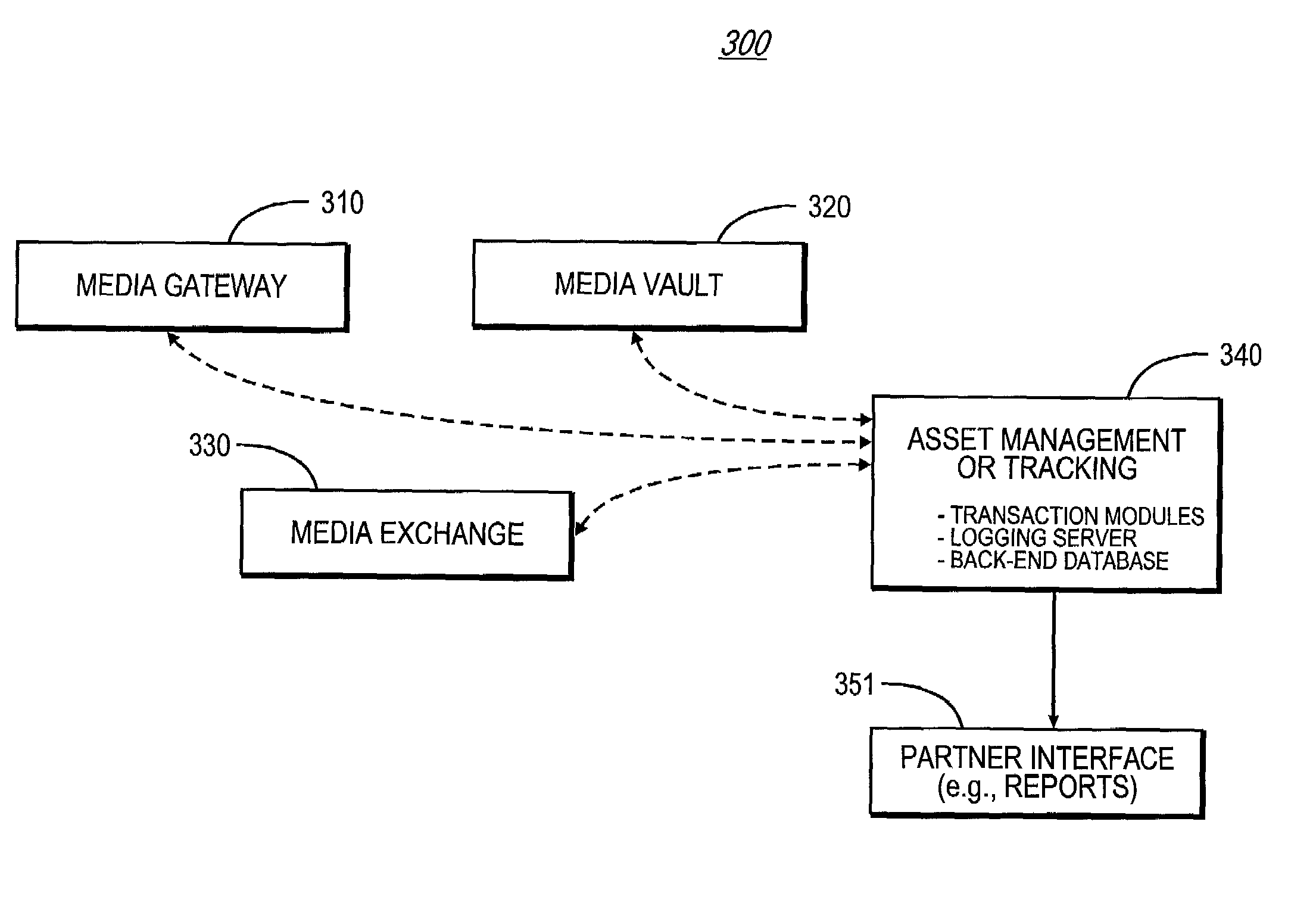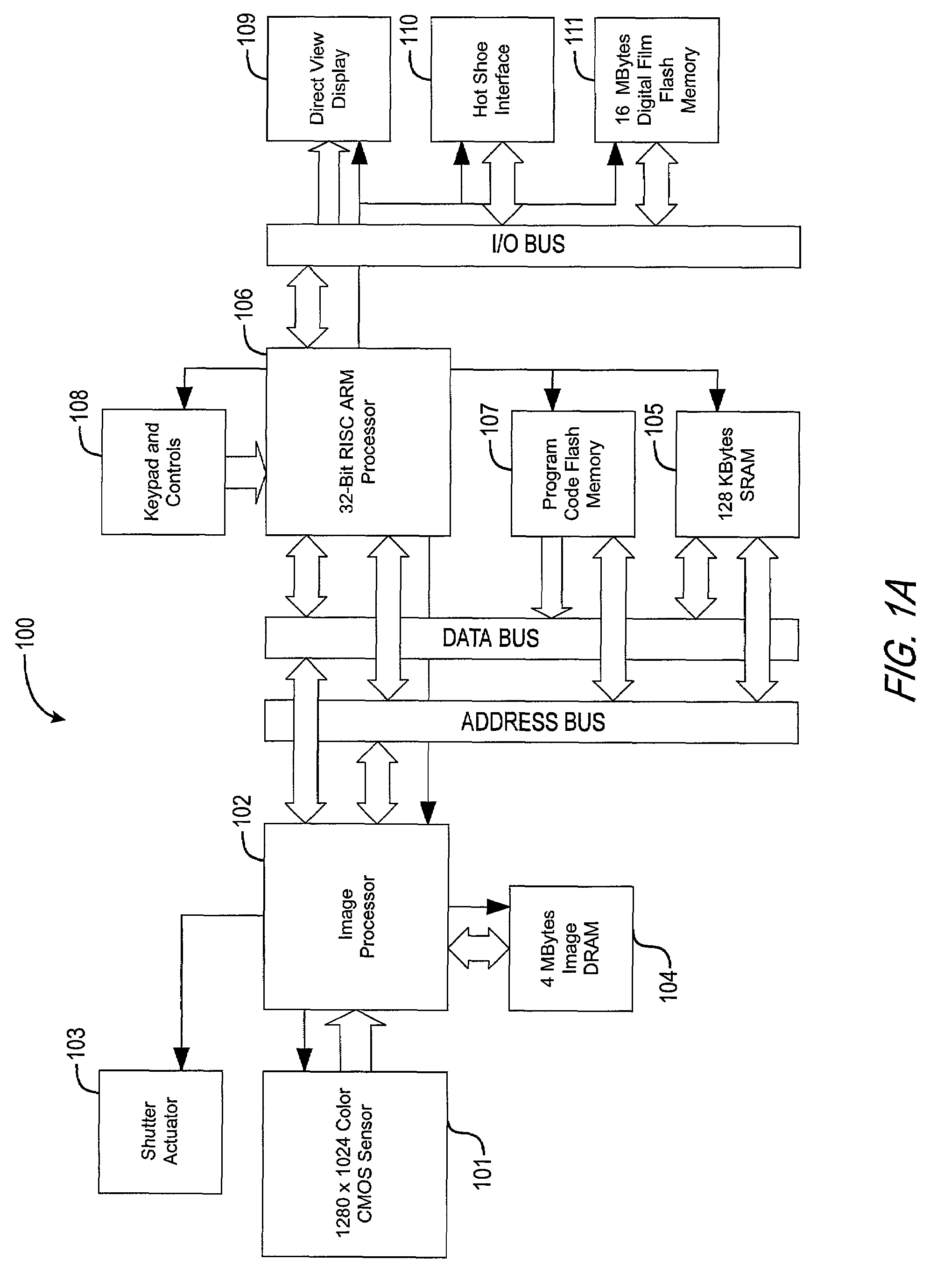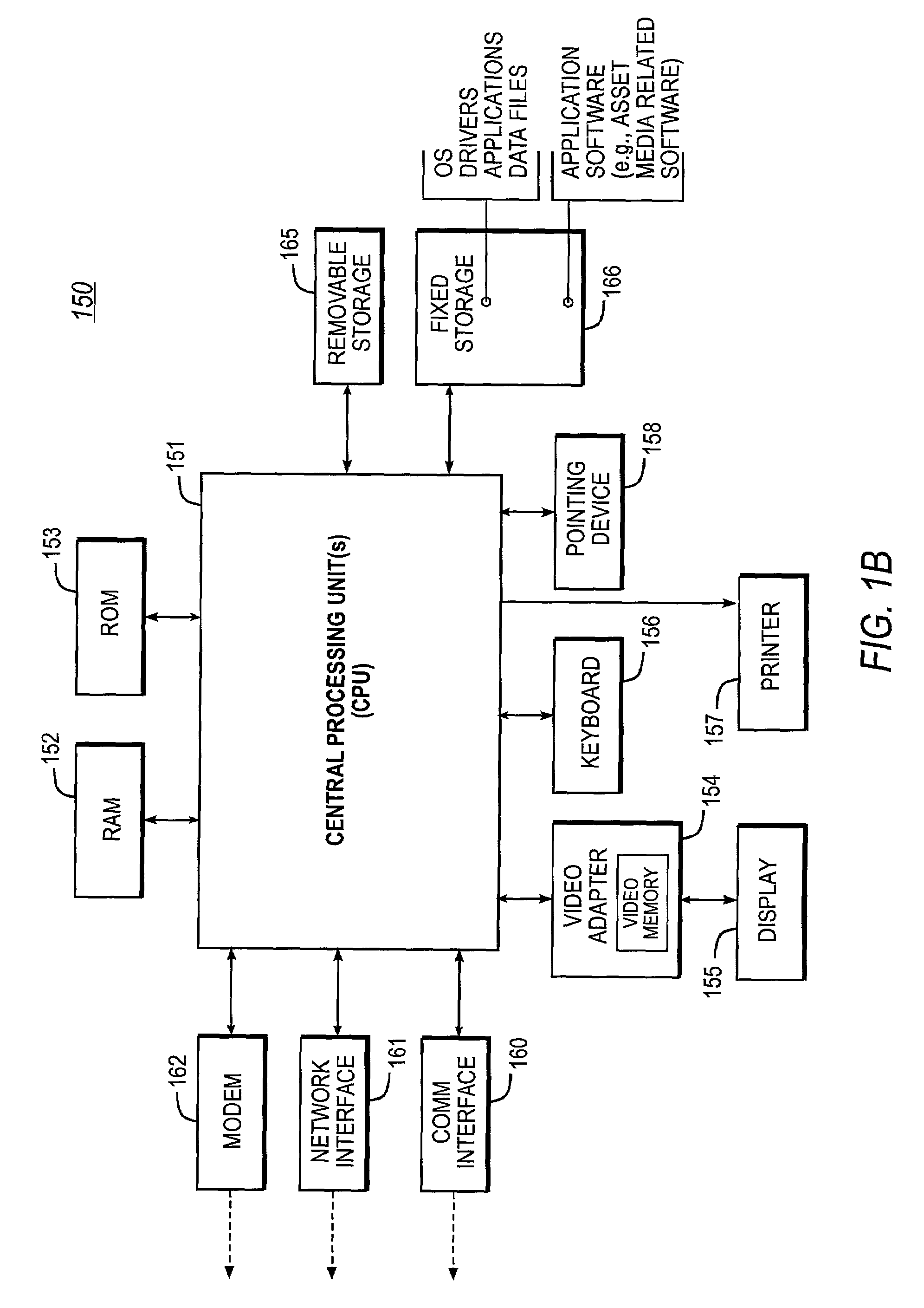Media asset management system
a technology of asset management and media, applied in the field of media objects, can solve the problems of inability to track at the application layer, no end-to-end solution, and no end-to-end solution
- Summary
- Abstract
- Description
- Claims
- Application Information
AI Technical Summary
Benefits of technology
Problems solved by technology
Method used
Image
Examples
example # 3
EXAMPLE #3
Login Transaction Posted via an HTTP Call
[0127]http: / / AssetTracker / loggingServer?userid=123&session=345A55TT&login=4558883 33&lang=english&refer=none&last=23334455&partner=123&time=555099222
example # 4
EXAMPLE #4
Share Transaction Posted via an HTTP Call
[0128]http: / / AssetTracker / loggingServer?userid=123&host=PC&hosttype=NA&sharetime=5555666&partner=123&time=56667744
In response to receiving such HTTP calls, the logging server 530 (Java servlet) parses and collects the data and writes the data into the database. For instance, the information may be written to the database by an appropriate SQL INSERT command. If desired, each INSERT command may be packaged within a corresponding stored procedure, where the stored procedure has as parameters the same fields as described in the tables, such as illustrated as follows:[0129]MediaGatewayTransactionLogInsert( . . . )[0130]EcomTransactionInsert( . . . )[0131]LoginLogInsert( . . . )[0132]ShareLogInsert( . . . )
If a parameter is passed as null to the stored procedure then no field in the table will be written.
[0133]FIG. 6 is a block diagram illustrating partner interaction with the asset management system of the present invention. A multitude...
example # 1
EXAMPLE #1
Partner Request for an Accounting Report
[0135]http: / / AssetTracker / reports?type=summary&partner=123&loginid=xxxx&passwd=YY YYY
In response to this request, an XML report (partnerSummary.xml) will be returned to the partner.
PUM
 Login to View More
Login to View More Abstract
Description
Claims
Application Information
 Login to View More
Login to View More - R&D
- Intellectual Property
- Life Sciences
- Materials
- Tech Scout
- Unparalleled Data Quality
- Higher Quality Content
- 60% Fewer Hallucinations
Browse by: Latest US Patents, China's latest patents, Technical Efficacy Thesaurus, Application Domain, Technology Topic, Popular Technical Reports.
© 2025 PatSnap. All rights reserved.Legal|Privacy policy|Modern Slavery Act Transparency Statement|Sitemap|About US| Contact US: help@patsnap.com



